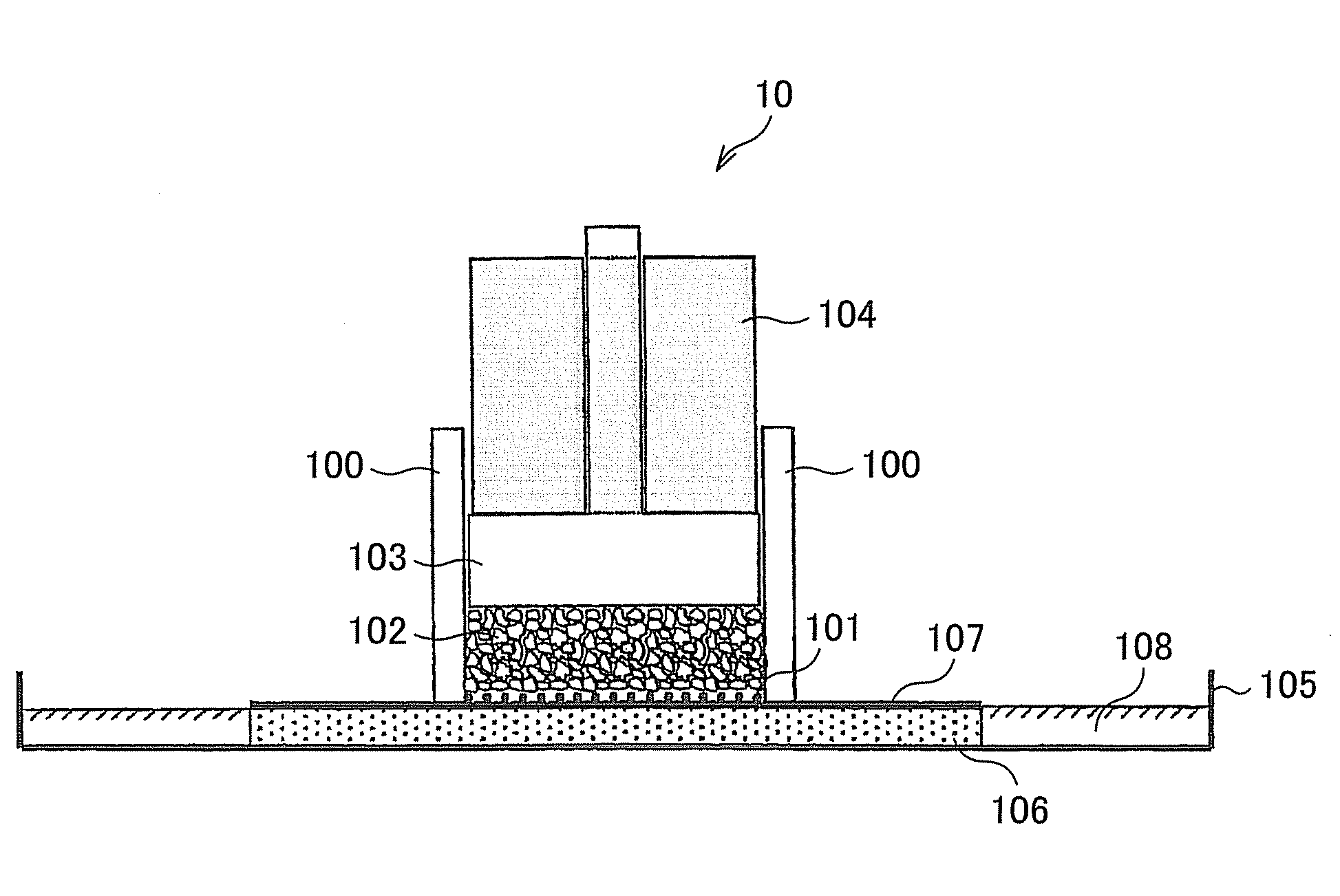Particulate water-absorbent polymer and production method thereof
a water-absorbing polymer and particulate technology, applied in the field of particulate water-absorbing polymers, can solve the problems of increasing the extractable content, reducing the absorbing ability, and not being able to achieve sufficient improvement, etc., to achieve the effect of improving urine tolerance, reducing the amount of additives, and no positive effect on absorbing ability
- Summary
- Abstract
- Description
- Claims
- Application Information
AI Technical Summary
Benefits of technology
Problems solved by technology
Method used
Image
Examples
production example 1
[0210]In a reactor formed by attaching a cover to a double-arm type stainless kneader having a capacity of 10 liters and equipped with two sigma type blades and a jacket, a reaction liquid was obtained by dissolving 0.10 mol % (with respect to a total monomer) of polyethylene glycol diacrylate to 5500 g of sodium acrylate aqueous solution (monomer concentration was 37.7 wt %, iron content (based on Fe2O3) was 0.1 ppm by mass, p-methoxyphenol content was 50 ppm by mass, protoanemonin and / or furfural content were N.D. (not detectable)) having a neutralization ratio of 75 mol %. In the polyethylene glycol diacrylate serving as an internal crosslinking agent, an average addition molar number n of ethyleneoxide was 8.2. Next, a monomer solution was added to the sigma type double-arm kneader while being maintained at 35° C., and thereafter, nitrogen gas was blown into the kneader so as to replace inside air with nitrogen so that oxygen dissolved in a system was not more than 1 ppm by mass...
production example 2
[0212]The water-absorbent polymer was produced with use of an apparatus illustrated in FIG. 3 of United States Patent Application Publication No. 2004 / 0092688.
[0213]With use of an apparatus illustrated in FIG. 1 of aforementioned United States Patent Application Publication No. 2004 / 0092688, a monomer solution 20 was prepared by adjusting (i) 48.5 wt % aqueous sodium hydroxide (iron content (based on Fe2O3) was 0.5 ppm by mass) so that a flow rate thereof was 5.12 g / s, (ii) acrylic acid (p-methoxyphenol content was 80 ppm by mass, protoanemonin content and / or furfural content were N.D. (not detectable)) so that the flow rate thereof was 6.10 g / s, (iii) 30 wt % polyethylene glycol diacrylate aqueous solution (I) so that the flow rate thereof was 0.15 g / s, (iv) a solution (II) obtained by mixing 50.0 parts by mass of 1.0 wt % 2-hydroxymethyl-2-methylpropiophenone acrylic acid solution and 50.0 parts by mass of 0.5 wt % trisodium diethylenetriamine-pentaacetic acid aqueous solution so ...
example 1
[0216]In a reactor formed by attaching a cover to a double-arm type stainless kneader having a capacity of 10 liters and equipped with two sigma type blades and a jacket, a reaction liquid was obtained by dissolving 0.10 mol % (with respect to a total monomer) of polyethylene glycol diacrylate to 5500 g of sodium acrylate aqueous solution (monomer concentration was 37.7 wt %, iron content (based on Fe2O3) was 0.1 ppm by mass, p-methoxyphenol content was 50 ppm by mass, protoanemonin and / or furfural content were N.D. (not detectable)) having a neutralization ratio of 75 mol %. In the polyethylene glycol diacrylate serving as an internal crosslinking agent, an average addition molar number n of ethyleneoxide was 8.2. Next, a monomer solution was added to the sigma type double-arm kneader while being maintained at 35° C., and thereafter, nitrogen gas was blown into the kneader so as to replace inside air with nitrogen so that oxygen dissolved in a system was not more than 1 ppm by mass...
PUM
| Property | Measurement | Unit |
|---|---|---|
| temperature | aaaaa | aaaaa |
| temperature | aaaaa | aaaaa |
| temperature | aaaaa | aaaaa |
Abstract
Description
Claims
Application Information
 Login to View More
Login to View More - R&D
- Intellectual Property
- Life Sciences
- Materials
- Tech Scout
- Unparalleled Data Quality
- Higher Quality Content
- 60% Fewer Hallucinations
Browse by: Latest US Patents, China's latest patents, Technical Efficacy Thesaurus, Application Domain, Technology Topic, Popular Technical Reports.
© 2025 PatSnap. All rights reserved.Legal|Privacy policy|Modern Slavery Act Transparency Statement|Sitemap|About US| Contact US: help@patsnap.com


